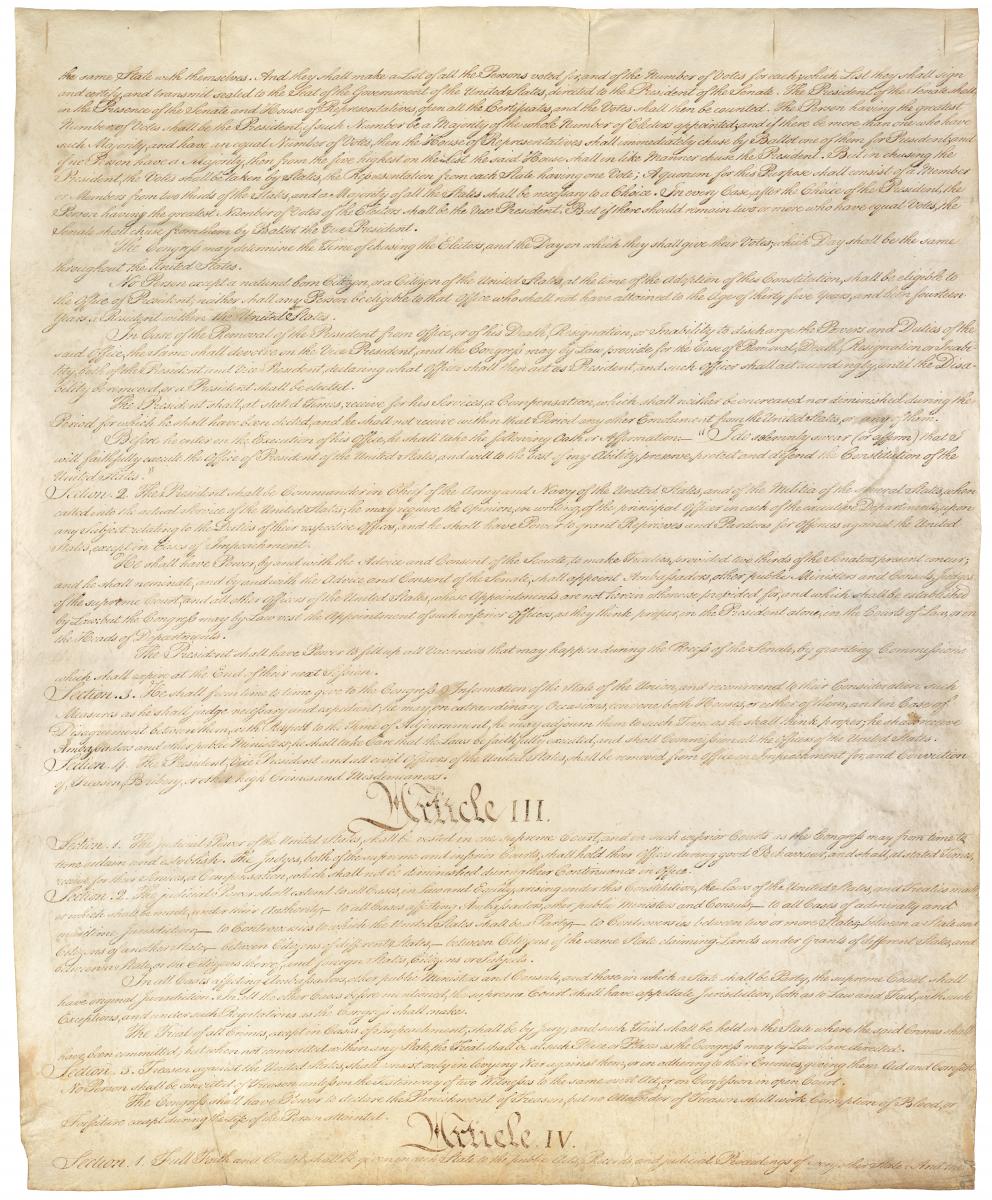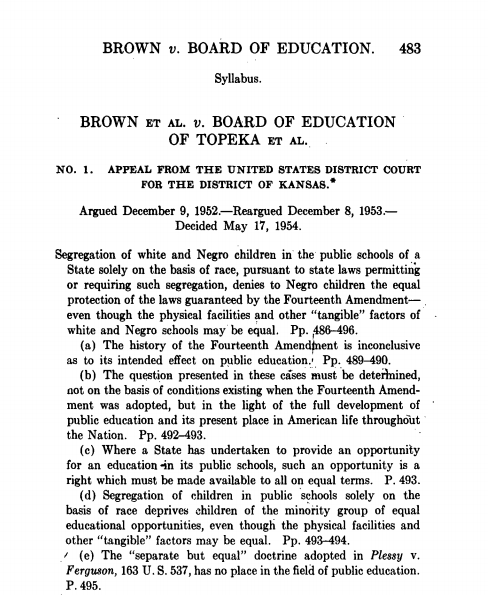
U.S. Supreme Court Appellate Case Files
Article III, Section 1, of the Constitution established and empowered the judicial branch of the Federal Government, including the Supreme Court of the United States. The Supreme Court's jurisdiction over lower courts was established by authority of the Judiciary Act of September 24, 1789 (1 Stat. 73).
The National Archives in Washington, DC (Archives 1), houses U.S. Supreme Court appellate jurisdiction case files beginning in 1792. We receive new case files annually, usually from the term two years immediately prior to the present. For example, in 2019, we received case files from the 2017 Term.
Appellate case files are found in Entry A1 21 of Record Group 267, Records of the Supreme Court of the United States (National Archives Identifier 301668).
Note that this series primarily contains textual records. For audio recordings of oral arguments, see U.S. Supreme Court Oral Arguments.
Contents of Appellate Case Files
Appellate case files in Entry A1 21 can include the following documents, although not every file contains every document:
- Petitions for writs of error or certiorari
- Transcripts of record from lower courts
- Exhibits
- Briefs*
- Motions
- Orders
- Judgments
- Mandates
- Opinions (majority, concurring, and/or dissenting)
-
Administrative correspondence
*Not all briefs are housed at the National Archives. For some cases, related briefs are housed at the Law Library of Congress. There is usually no way to know if a case file in Entry A1 21 contains a particular brief without checking the file.
Accessing Appellate Case Files
Researchers can view U.S. Supreme Court appellate case files in person in the Archives 1 research room or order copies of case files by emailing archives1reference@nara.gov.
However, to request the file in person or remotely, researchers must know the case file number assigned to the case when it was docketed.
Appellate case files in Entry A1 21 are numbered and arranged differently depending on the time period.
United States Reports
The United States Reports are the official reports of decisions made by the U.S. Supreme Court. Beginning roughly in the late 1950s, they can also include the case file number needed to access records in Entry A1 21.
Note that the case file number is not the same as the U.S. Reports citation number. The U.S. Reports citation first indicates the volume in which the Court's decision is published, followed by the page number where the decision appears.
For example, the U.S. Reports citation for Brown v. Board of Education is 347 U.S. 483. This means that the decision in this case is published in Volume 347, page 483, of the U.S. Reports.
However, the case file number assigned to Brown v. Board of Education when it was docketed is 1 October Term 1954. This is the case file number needed to access case records in Entry A1 21.
Accessing U.S. Reports
The U.S. Reports have been digitized and made available online:
- Reports for the Court's earliest term through its 2012 term are available on the Law Library of Congress's website.
- Reports for the Court's 1991 term through its 2013 term are available on the Supreme Court's website.
More recent Court decisions are published on the Supreme Court's website as slip opinions until they are published in the United States Reports.
Related Microfilm
The following microfilm publications include early and landmark cases, as well as dockets and indexes that can be used to identify case file numbers for Entry A1-21. Lists of attorneys admitted to practice before the Supreme Court ("attorney rolls") are also available.
Each microfilm publication is available at Archives 1. Some publications have been digitized and made available online through the National Archives Catalog.


